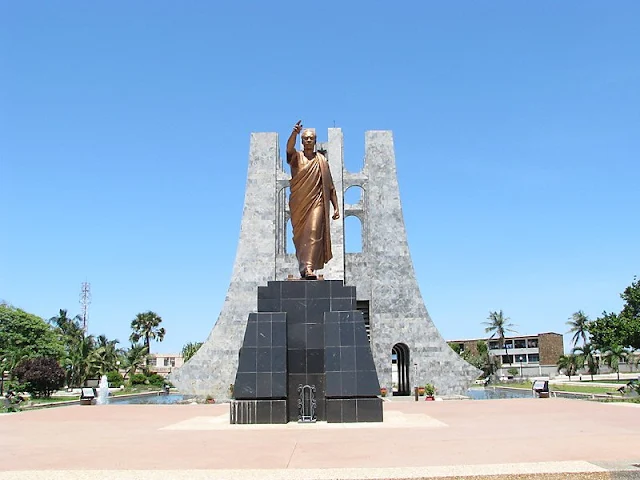Ethnic Groups and languages in Ghana
Ghana is an
ethnically diverse country with several ethnic groups and tribes speaking
different languages. It used to be said that before independence the country
had about 100+ ethnic group’s languages. Currently it very difficult to tell
the exact number of ethnic groups in Ghana. But officially the major ethnic
groups in Ghana are the Akans, Mole-Dagbane, Ewe, Guan, and Ga-Adangbe.All
these ethnic groups are subdivided into subgroups. The subdivisions of each
group share a common cultural heritage, history, language, and origin.
The Akan group is
the majority in present-day Ghana. They belong to the Kwa group like the Ewe
and the Ga-Adangbe according to linguistic language classification. While
the Gur-speaking people are the Gurma, Grusi, and Mole-Dagbane.The
Kwa and the Gur are the two major linguistic subfamilies which come from
Niger-Congo linguistic family. The Kwa linguistic group can be found in the
south of the Volta River, constituting 75% of Ghana’s
population while the Gur group are in the north of the Volta River.
Akans
The Akans are
divided into the Asante, Fante, Akwapim, Akyem, Akwamu, Ahanta, Bono, Nzema,
Kwahu, and Safwi.The Asante’s are the biggest in the Akan group and also in the
country. They speak Twi and makeup 47.5% of Ghana’s population. The Twi dialect
has become one of the commonest dialects in the country coming second after
English. The Asante’s are said to be proud and confident because of their
wealth and power. The Asante Kingdome is one of the largest in Africa. Though
the Kingdom pride itself in gold and other precious minerals, more than 50% of
its inhabitance are very poor.
Mole-Dagbane
Mole Dagbane groups form 16.5% of the population of Ghana and have a common ancestor. They speak the Dagbani language and are related to the Mossi who have their homeland in present-day Burkina Faso. Its speakers are culturally the most varied; they include the Nanumba, Dagomba, Mamprusi, Wala, Builsa, Frafra, Talensi, and Kusase. The northern sector of the country is the most deprived in term of development and most of the poorest communities can be located there.
Ewes
The Ewe land
which constitutes a single linguistic group, are divided into the Nkonya,
Tafi, Logba, Sontrokofi, Lolobi, and Likpe.The Ewes are said to hail from the
northern part of Nigeria, other accounts say east and another suggests it west.
They are located in Benin, Togo and the Volta Region of Ghana. They speak four
dialects that are Anglo, Awuna, Hudu, and Kotafoa. They account for 13.9% of
the Ghanaian population and speak the Ewe language. Most of the dwellers are
traditionalist with a large number of smaller deities. They have a very rich
culture which is music-driven. The Ewe women are said to be the most
beautiful and industrious in the country. The region is blessed with oil but
it's among one of the deprived and underdeveloped regions in the country.
Just to mention a
few numbers of languages spoken in different regions of Ghana. The Asantes
speak Twi. Within the Upper West Region, languages are spoken include Gagaare, Birifor and
Sisaala. Ghanaians living in the Northern Region speak Dagbane,
Gonja, Anufo / Chokosi, Mampruli, Mo, Deg, Nawuri, Chumburung, Birifor, Hanga,
Konkomba and Tampulma among other languages. In the Volta Regions of
Ghana, the languages spoken are Akyode, Nkonya, Adele, Ntrubo
and Ewe. Kasem, Buli, Frafra, Kusaal, Kasem and Koma are spoken by people
living in the Upper Eastern Region of Ghana. People who live
in the Greater Accra Region speak Ga and Dangbe. On the other
hand, those who live in the western region speak the Nzema.
List of Ethnic
Groups in Ghana and Population Percentage
Ashanti 47.5%
Mole-Dangbon 16.6%
Ewe 13.9%
Ga-Dangme 7.4%
Gurma 5.7%
Guang 3.7%
Grusi 2.5%
Mande 1.1%
Other Groups 1.4%





No comments